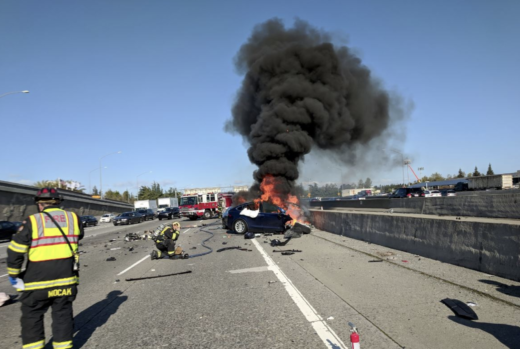The family of a Foster City software engineer who died last year after his Tesla SUV crashed into a Silicon Valley freeway barrier has filed a lawsuit that blames the automaker and Caltrans for the fatal incident.
Walter Huang, 38, was killed March 23, 2018, when his Tesla Model X smashed into a lane divider on U.S. 101 in Mountain View.
A preliminary National Transportation Safety Board investigation found that Huang did not have his hands on the vehicle’s steering wheel for the final 6 seconds before the crash and that the car accelerated sharply just prior to impact.
The suit filed Tuesday in Santa Clara County Superior Court on behalf of Huang’s wife and two children takes aim at claims from Tesla that its often-updated Autopilot driver-assist system enhances its vehicles’ safety.
“Mrs. Huang lost her husband and two children lost their father because Tesla is beta testing its Autopilot software on live drivers,” B. Mark Fong, one of the lawyers representing the family, said in a statement.

